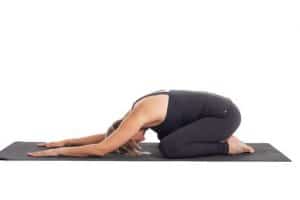Exercise Rx for Health and Fitness Professionals
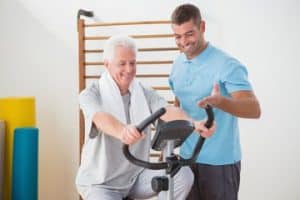 Exercise Rx is different for cancer recovery. Our instincts as health and fitness professionals can steer us in the wrong direction when working with cancer patients. In order to be able to create a SAFE and EFFECTIVE exercise program, you MUST understand the side-effects and contraindications from each individual surgery, coupled with those from the various treatments that they have undergone or are undergoing. The logic that we apply to our healthy clients may prove to be completely ineffective, exacerbate pre-existing conditions, and do more harm than good.
Exercise Rx is different for cancer recovery. Our instincts as health and fitness professionals can steer us in the wrong direction when working with cancer patients. In order to be able to create a SAFE and EFFECTIVE exercise program, you MUST understand the side-effects and contraindications from each individual surgery, coupled with those from the various treatments that they have undergone or are undergoing. The logic that we apply to our healthy clients may prove to be completely ineffective, exacerbate pre-existing conditions, and do more harm than good.
Disclaimer – Working with cancer patients, or any special population, without specific education and training puts you at high risk for a negligence law suit if your client gets hurt. In the court of law they must be able to prove gross negligence. Not having professional training in cancer exercise could be considered gross negligence! Learn more about becoming a Cancer Exercise Specialist®.
To Plank or Not to Plank
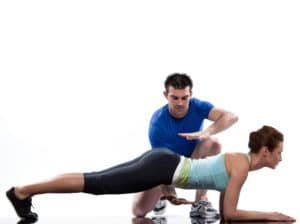
 If your client has undergone a mastectomy and/or lymph node dissection, there are several potential contraindications:
If your client has undergone a mastectomy and/or lymph node dissection, there are several potential contraindications:
- The pressure on the affected shoulder(s) can cause undue pain and interfere with healing time
- Holding this position for an extended period of time may increase the risk of lymphedema in the affected arm/shoulder
- If they already have round shoulder syndrome, this will exacerbate shoulder protraction. Try stretching the chest and strengthening the back first, minimizing the round shoulder syndrome, then come back to this exercise.
Exercise Rx: Try a modified plank to begin with. Have your client bend their legs so that their knees are on the floor with toes touching the floor. If they are able to do this pain free then you can have them raise their feet off of the floor and eventually progress to a traditional plank.
Remember to START and PROGRESS SLOWLY!
Learn more about becoming a Cancer Exercise Specialist®.
Every Stretch is Not for Everybody
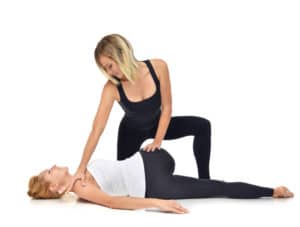
It’s a different story, however, if your client has undergone surgery, lymph node removal, or radiation on the shoulder that is being held down. The following precautions only apply to the affected shoulder.
 There are several potential contraindications:
There are several potential contraindications:
- The pressure on the affected shoulder(s) can cause undue pain and interfere with healing time.
- Holding this position for an extended period of time may increase the risk of lymphedema in the affected arm/shoulder for anyone, man or woman, who has had lymph nodes in the neck, chest, or armpit on that side, removed or irradiated.
Exercise Rx: Try performing the stretch and lightly touching their affected shoulder while explaining to them that they need to retract that shoulder and keep it in contact with the floor; as you rotate their hip to other side. This can provide them with a solid foundation for shoulder retraction which you will find yourself referring to quite often.
Remember to START and PROGRESS SLOWLY!
Learn more about becoming a Cancer Exercise Specialist®.
Crunching Numbers
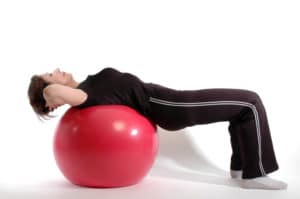
What if your client has undergone an abdominal TRAM reconstruction and is “missing” part, or all, of their rectus abdominis? Would you recommend a crunch on or off the ball?
 There are several potential contraindications:
There are several potential contraindications:
- If they underwent unilateral (one side) reconstruction they will technically be able to perform a crunch. The problem is that you are creating a lateral imbalance by causing the unaffected side to do the “work” of both sides.
- If they underwent bilateral (both sides) reconstruction, effectively, they can not perform an abdominal crunch. This exercise becomes both risky and futile.
- The abdominal muscle(s) will continue to contract to spite the fact that it is now in the chest wall (providing a blood supply to the flap). The abdominal muscles will hypertrophy just as they would if they were still in the abdomen.
Exercise Rx: Try having your client perform side bends with no weight to begin with, gradually and incrementally adding resistance. Sometimes as little as five pounds can cause back pain. Also only start with a few repetitions on each side and gradually increase them as well. The best thing your client can do is “core” work on the physio ball, balance discs, BOSU(R) Balance Trainer, and foam roller. Make sure that you spot them and ensure that they have perfect form.
Remember to START and PROGRESS SLOWLY!
Learn more about becoming a Cancer Exercise Specialist®.
Bouncing is Not Just for Kids
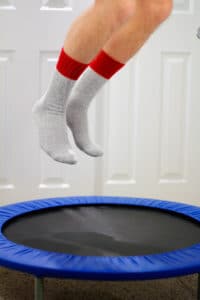
Your client can do rebounding or jumping exercises in the privacy of their home with a mini trampoline. This may be a comfort to many patients who do not want to go to a gym because they don’t feel good about themselves and the way they look, or because their immune system is compromised. The exercises that you can have your client do include bouncing, jumping, running, twisting and various combinations of those movements. Every day their body has a different energy level; make sure that they exercise within their limitations for that given day day.
Rebounding is an exercise that reduces body fat; firms legs, thighs, abdomen, arms, and hips; increases agility; and improves balance.
 There are several potential contraindications:
There are several potential contraindications:
- If they have peripheral neuropathy in their feet they should not perform any high impact activities; try having them ride a stationary bike instead
- If their balance has been affected by treatment, or they did not have good balance to begin with, make sure that you (or someone else) is/are there to spot them and that they bounce at a lower intensity
- Older clients, and those with poor balance. will have a higher risk of twisting an ankle so keep them bouncing at a low intensity
Exercise Rx: Have your client stand on top of a mini-trampoline, simply shifting their weight from side to side without eliminating contact point with their feet. To begin with you should spot them constantly. As they feel more confident they can add a bit more momentum. I like to add a mental challenge by having them integrate additional moves, count forward and backward, progress and regress etc.
Remember to START and PROGRESS SLOWLY!
Learn more about becoming a Cancer Exercise Specialist®.
Superman Meet Superwoman
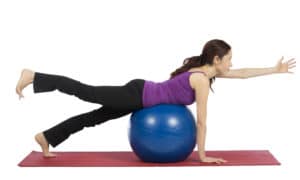
This is a particularly good choice for the client who has undergone shoulder surgery, breast cancer surgery, radiation to the axillary lymph nodes, and/or breast reconstruction. Using the stability ball will alleviate a good amount of pressure on the arm/shoulder that is in contact with the floor. This reduces the potential for pain and injury and minimizes the risk of lymphedema with the added bonus of strengthening the core.
 There are several potential contraindications:
There are several potential contraindications:
- The pressure on the affected shoulder(s) may still cause undue pain and interfere with healing time; use discretion and communicate with your client.
- Holding this position for an extended period of time may still increase the risk of lymphedema in the affected arm/shoulder for anyone, man or woman, who has had lymph nodes in the neck, chest, or armpit on that side, removed or irradiated.
Exercise Rx: If your client has recently undergone a mastectomy, breast reconstruction, thoracic surgery, or radiation to the chest, as well as any surgery or reconstruction to the pelvic area, make sure that they position themselves so that there is no pain or pressure on the affected area. Alternatively you can have them begin in a prone position on the floor raising the opposite arm and leg. This will address the issue of pain/pressure on the affected arm/shoulder, however, it will not remedy and pain/pressure on the abdominal or chest area if that is a consideration. You can try using a pillow to soften the floors’ surface and make it more comfortable. Ultimately, if it hurts, don’t do it!
Remember to START and PROGRESS SLOWLY!
Learn more about becoming a Cancer Exercise Specialist®.
The Pros and Cons of Bands

You should always begin with a band with very little resistance and gradually increase both resistance and repetitions based on your client’s response to each workout. The band provides resistance both concentrically and eccentrically; which is an added bonus over the dumbbell.
Suggest that your client move their arm through the Sagittal plane to get into position. Only have them go as far as they can with no pain. Remember that is they do not have at least 135° of ROM in FLEXION, that you should be working on stretching and not strength training.
 There are several potential contraindications:
There are several potential contraindications:
- It is common for someone to wrap the band around their hand to obtain the desired amount of resistance for a given exercise. This is a major CONTRAINDICATION for anyone who is at risk for lymphedema in that arm/shoulder. Restriction of blood and lymphatic flow can increase the risk of getting lymphedema. Make sure that your client is holding the band in the same way that is pictured here.
- Remember that doing too much weight/resistance and/or too many repetitions too quickly can also increase the risk of lymphedema.
Exercise Rx: begin with moving through the Sagittal plane in shoulder flexion to loosen up the shoulder joint and increase ROM. Try Active Isolated stretching to gently end effectively improve ROM.
Remember to START and PROGRESS SLOWLY
Learn more about becoming a Cancer Exercise Specialist®.
Correcting Forward Hip Flexion
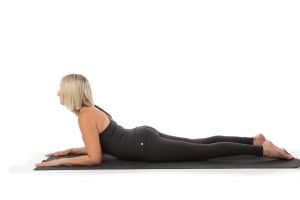
 There are several potential contraindications:
There are several potential contraindications:
- The pressure on the affected shoulder(s) may still cause undue pain and interfere with healing time; use discretion and communicate with your client.
- Holding this position for an extended period of time may still increase the risk of lymphedema in the affected arm/shoulder for anyone, man or woman, who has had lymph nodes in the neck, chest, or armpit on that side, removed or irradiated.
Exercise Rx: prior to beginning and “crunch-type” exercise, it is critical that your client be able to stand erect; not leaning forward. This exercise will help them to achieve that goal. Instruct your client to keep their neck in neutral to avoid neck strain. Begin by having them hold the pose for 5 seconds, or whatever they can do in the absence of pain, contracting their glutes the entire time. Start with a few repetitions and gradually add time and repetitions as tolerated.
Remember to START and PROGRESS SLOWLY!
Learn more about becoming a Cancer Exercise Specialist®.
Using Downtime Wisely
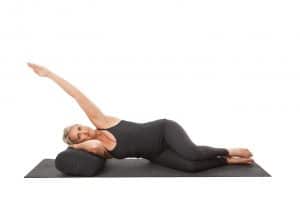
Each of these moments is an opportunity that your client can take to do something beneficial for themself and STRETCH!
For your clients that have had any surgery or radiation to the head/neck and/or axillary/thoracic regions, there are a multitude of benefits.
Benefits of stretching include:
- Increased blood and lymphatic flow
- Decreased muscle soreness
- Increased ROM and ability to perform activities of daily living (ADL’s)
- Neuromuscular education
- Injury prevention
- Improve posture
Exercise Rx: Instruct your client to stretch only until they feel a GENTLE stretching sensation. There should be slight DISCOMFORT at best; NO PAIN! Encourage them to modify the stretches to take into account their day-to-day pain and fatigue levels. Help them to understand that their flexibility may vary from day to day and that is to be expected. Make sure to emphasize the importance of breathing; it helps one ease into the stretch while also decreasing stress.
Remember to START and PROGRESS SLOWLY
Learn more about becoming a Cancer Exercise Specialist®.
Not Just for Yoga
Child’s Pose (Balasana) is a true resting pose, and one that you can hold for long periods of time without the need for props. The pose is calming for the mind, fantastic for digestion, and is wonderful for decompressing and elongating the spine and relieving pressure in the lower back.
One of the benefits that is overlooked is the ability to increase range of motion (ROM) in shoulder flexion. Whether your client is an athlete with a sports injury, or someone recovery from breast surgery and radiation, this is a gentle way to improve their ROM.
 There are several potential contraindications:
There are several potential contraindications:
- If your client has knee issues that cause them pain or discomfort in this position, try a modified pose keeping their knees at 90°. Alternatively they can sit in a chair and stretch their arms over a table.
- Make sure that your client is not holding their breath as that will increase their blood pressure.
Exercise Rx: Instruct your client to stretch only until they feel a GENTLE stretching sensation. There should be slight DISCOMFORT at best; NO PAIN! Encourage them to modify the stretches to take into account their day-to-day pain and fatigue levels. Help them to understand that their flexibility may vary from day to day and that is to be expected. Make sure to emphasize the importance of breathing; it helps one to ease into the stretch, while also decreasing stress.
Remember to START and PROGRESS SLOWLY
Learn more about becoming a Cancer Exercise Specialist®.
What is Your Reason for Having Your Client Perform a Chest (bench) Press?

First and foremost you should perform a postural assessment on your client. If they have more than “slight” round shoulder syndrome (protracted shoulders), they should avoid “pushing” activities; especially wight bearing ones.
 There are several potential contraindications:
There are several potential contraindications:
- It is common for someone to arch their backs when performing this exercise. Suggest bending their knees and placing their feet on the exercise bench to minimize the lordotic curve of the spine.
- When lifting too much weight there is a tendency for people to hold their breath, thereby increasing their blood pressure….BREATHE!
- Anyone who has round shoulder syndrome should work on strengthening their back and STRETCHING their chest. When the round shoulder syndrome is insignificant they may resume “pushing” exercises. My recommendation is 3 “pulling” to every 1″pushing” exercise.
Exercise Rx: If working with a client post-breast cancer or shoulder surgery begin with very light weight, and few repetitions, and focus on the eccentric (stretching) part of the movement. Weight and repetitions should be increased when there is no pain or discomfort and no swelling (lymphedema) following the workout.
Remember to START and PROGRESS SLOWLY
Learn more about becoming a Cancer Exercise Specialist®.
Swimming Isn’t Always the Safest Form of Exercise for Cancer Patients

When the doctor says it’s okay to begin moderate exercise, swimming is one of the best first steps. Many doctors and swimming experts endorse it as one of the safest and most comfortable ways to get back into exercise.
The best type of exercise for lymphedema patients is swimming and other water exercises because the water provides tissue counter pressure on the skin lymphatics and the muscular exercise helps the lymph to flow properly.

Exercise Rx: Your client should ALWAYS get permission from their doctor prior to beginning any exercise program, especially if they are immunocompromised. As with any form of exercise, begin with a short amount of time and gradually increase the time as tolerated.
Remember to START and PROGRESS SLOWLY
Learn more about becoming a Cancer Exercise Specialist®.
Pros and Cons of the Side Plank
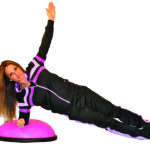
Side planks are relatively simple to perform — but they are not easy if you are a beginner with little to no core strength.
 There are several potential contraindications:
There are several potential contraindications:
- It stands to reason, that if someone has undergone any type of abdominal surgery, that this can be both challenging and risky due to lack of core strength and instability.
- For someone at risk of lymphedema in their arm/shoulder, this exercise should be AVOIDED. Not only does it put a tremendous amount of pressure on the affected arm, in some cases (if they hold their breath – Valsalva Maneuver) they may increase their risk of lymphedema even more.
- If someone has high blood pressure, holding their breath/Valsalva Maneuver, may increase their blood pressure.
Exercise Rx: Try a modified standard plank to begin with; to assess your clients’ core strength and potential discomfort. Have them bend their legs so that their knees are on the floor with toes touching the floor. If they are able to do this pain free, and with no swelling in next 24-48 hrs. (if at risk for lymphedema), then you can try to have them raise their feet off of the floor and eventually progress to a traditional plank. To focus on the obliques, try standing side-bends, or supine “bicycles.” For gentle core work we suggest exercise on a physio ball such as hip circles, pelvic tilts, and “opposite arm/leg.” These are all mentioned in detail in the CES Handbook.
Remember to START and PROGRESS SLOWLY
Shoulder Stabilization is KEY
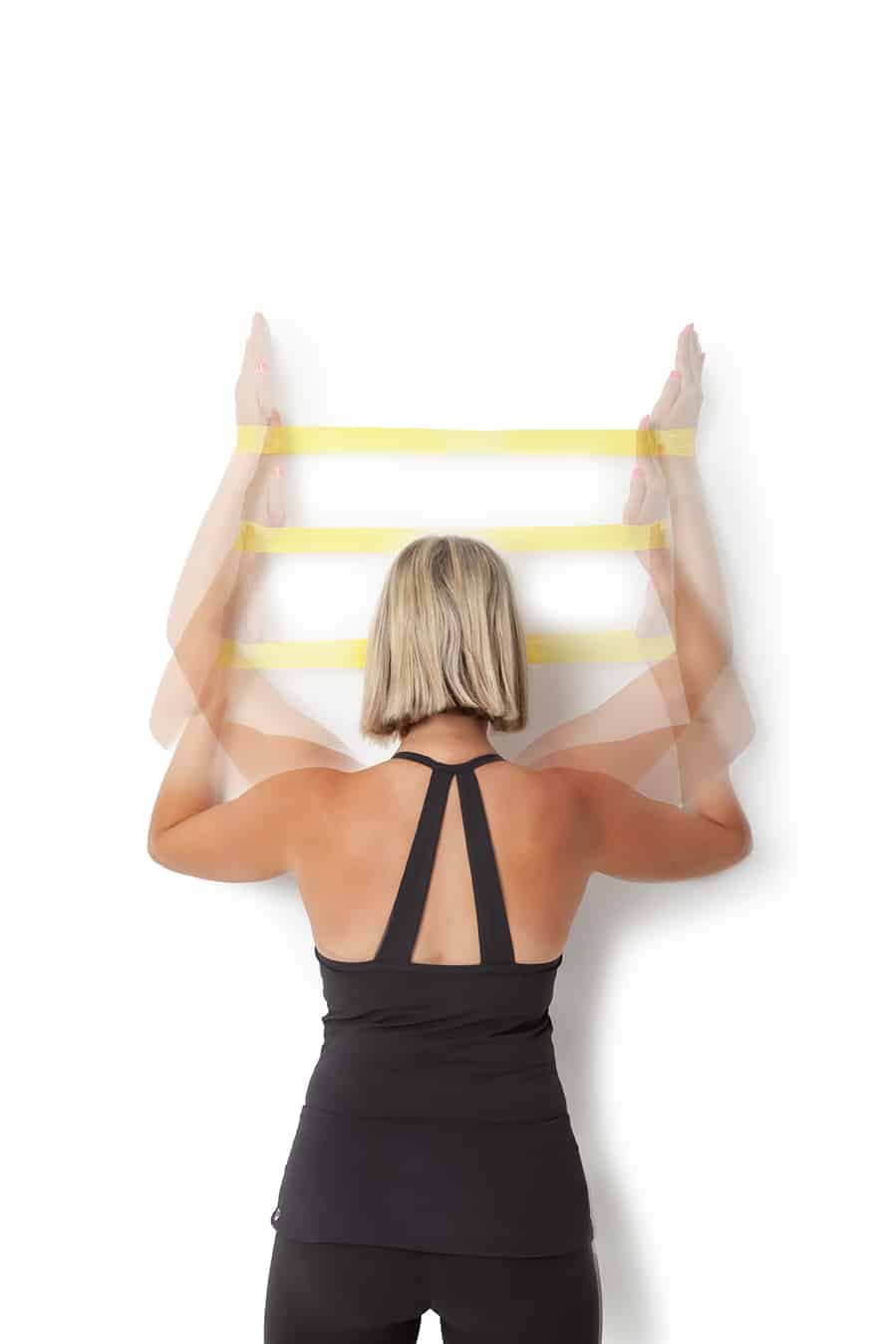
 There are several potential contraindications:
There are several potential contraindications:
- If your client is at risk for lymphedema in either arm, the band must be held between their fingertips and not wrapped around their hand (this will reduce the circulation and can increase their risk of lymphedema)
- If your client has peripheral neuropathy in their hands they may be struggling with their fine motor skills. They could lose control of the band, causing it to snap and hurt them.
Exercise Rx: Begin with no resistance, making sure that your client’s spine is in “neutral” and they are not excessively arching their lower back (adjust their stance and distance from the wall accordingly). Instruct them to engage their abdominal muscles. This may be difficult for many, as they do not always have the kinesthetic awareness required to engage core musculature. They will need to retract their shoulder blades as they “crawl” up and down the wall. When their form is excellent, and there is no discomfort in the absence of resistance, begin with the lightest resistance (band) possible. Instruct them to hold the band between the fingers of each hand, until desirable resistance is achieved. They will be pulling their bent arms out to the sides, against the resistance of the band, as they “crawl” up and down the wall. Start with just a few repetitions and make sure that there is no swelling in the next 24-28 hours. Gradually add repetitions and greater resistance.
Remember to START and PROGRESS SLOWLY
Learn more about becoming a Cancer Exercise Specialist®.

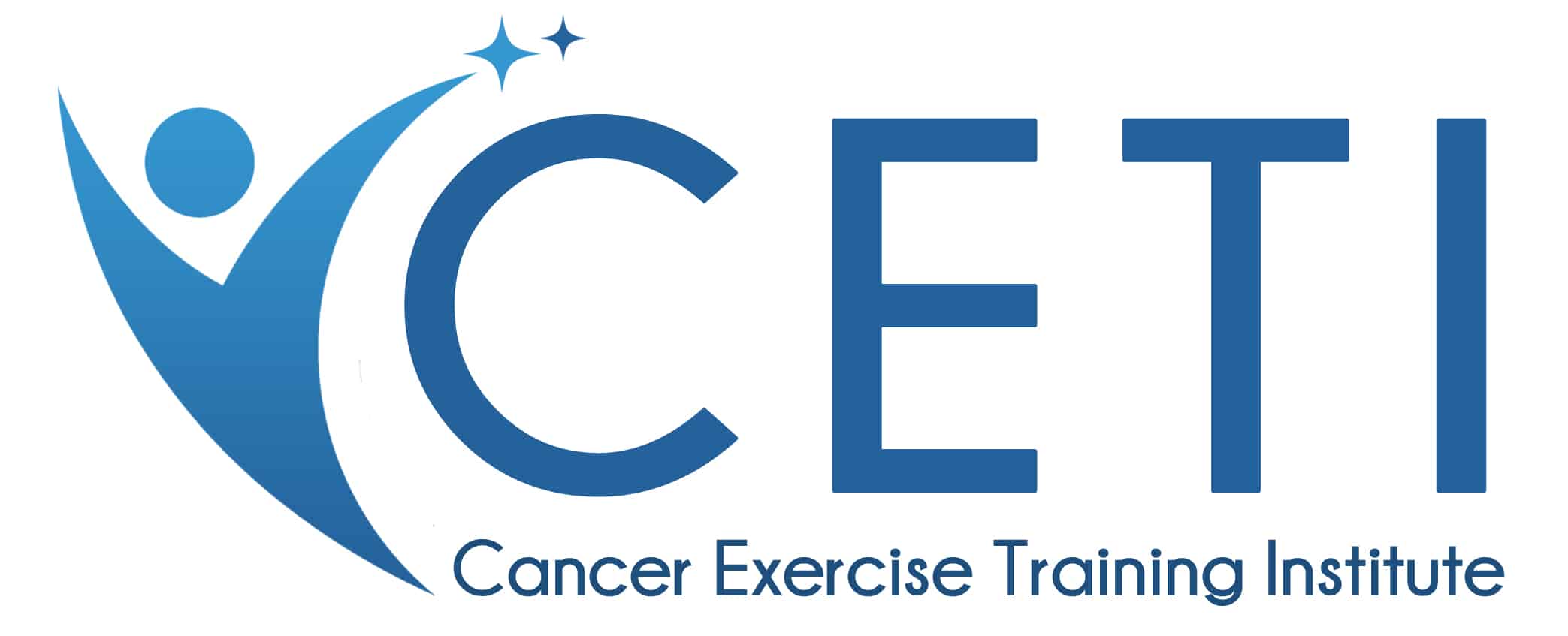
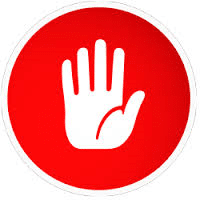 There are several potential contraindications:
There are several potential contraindications: